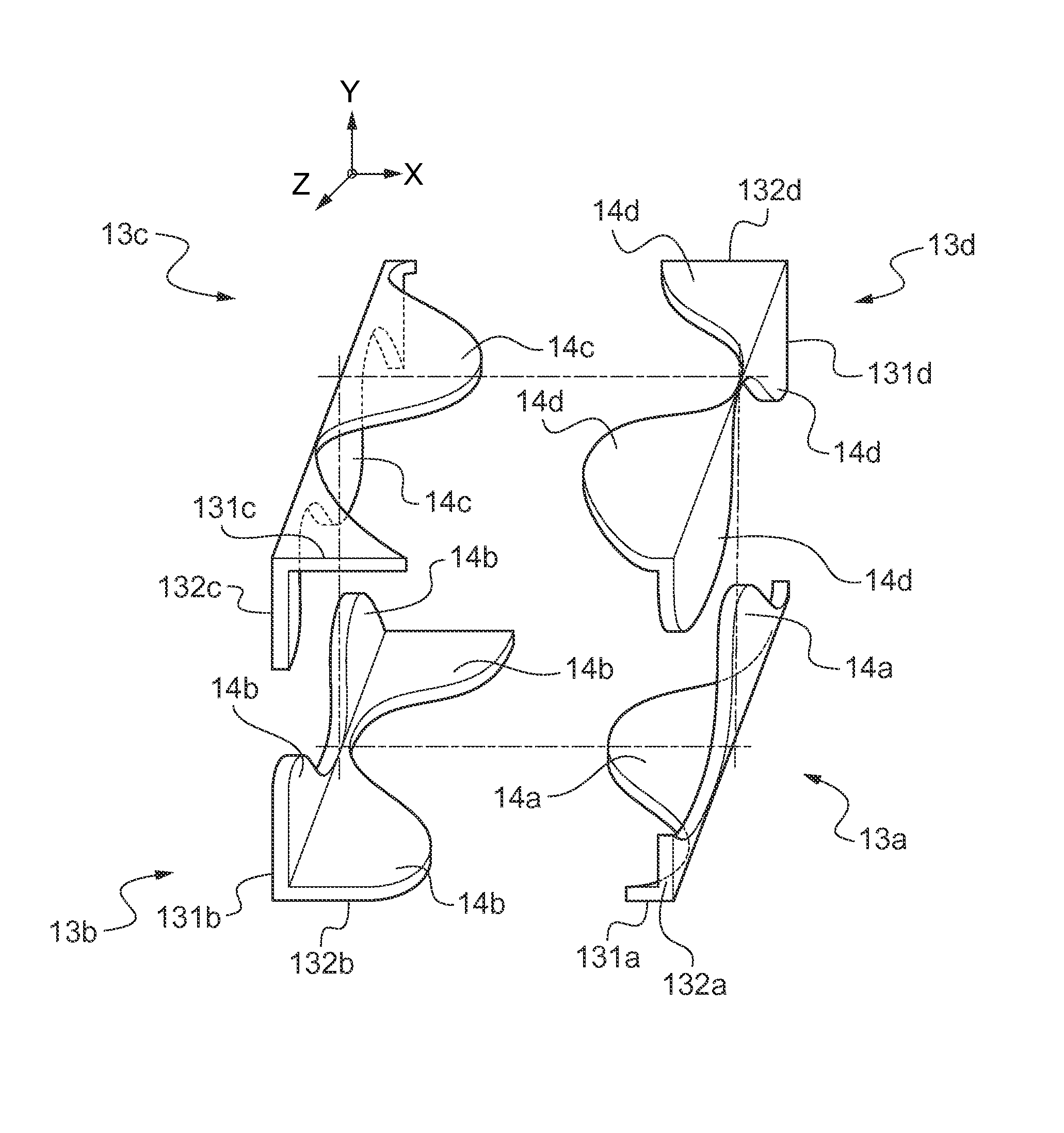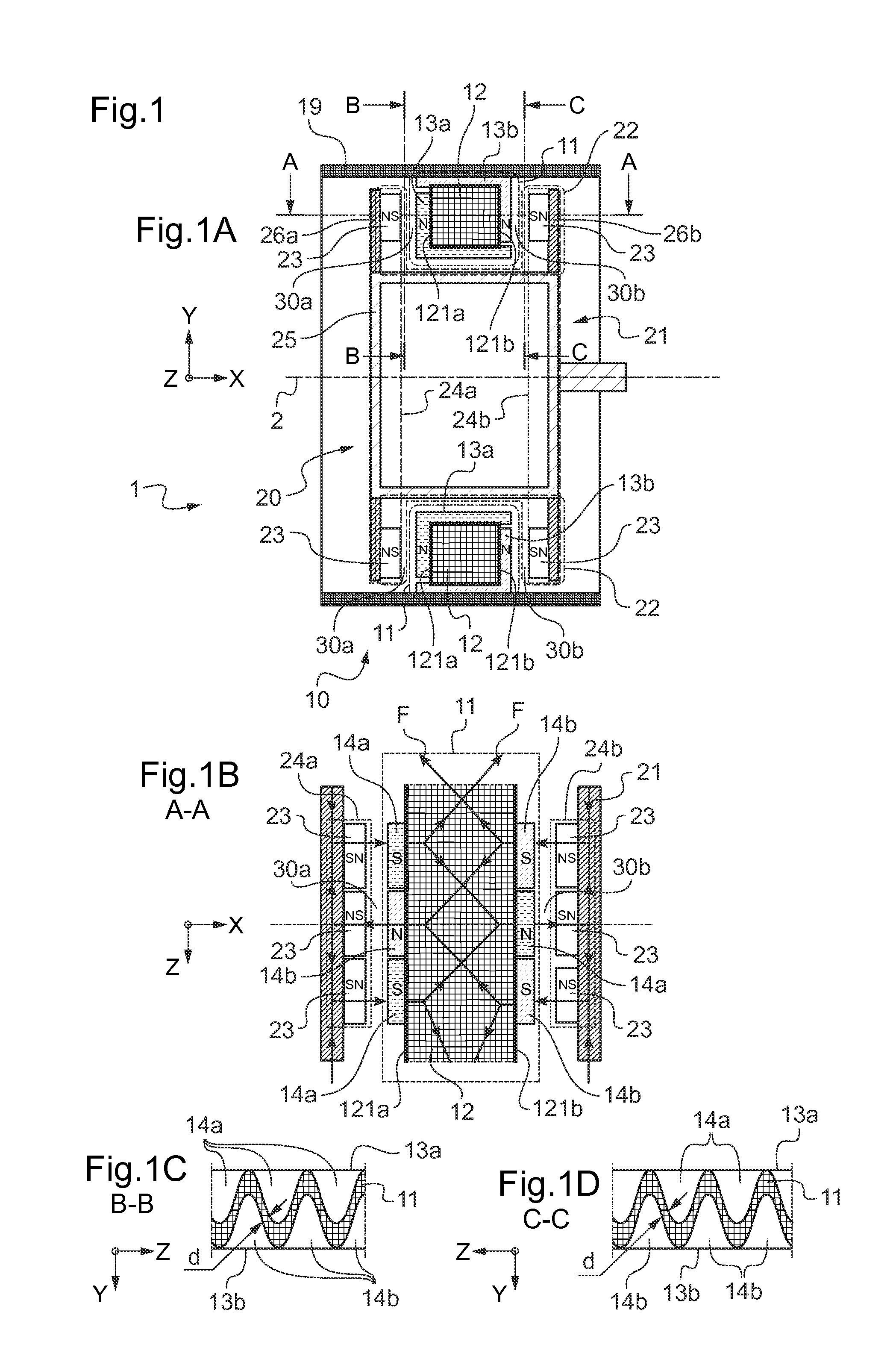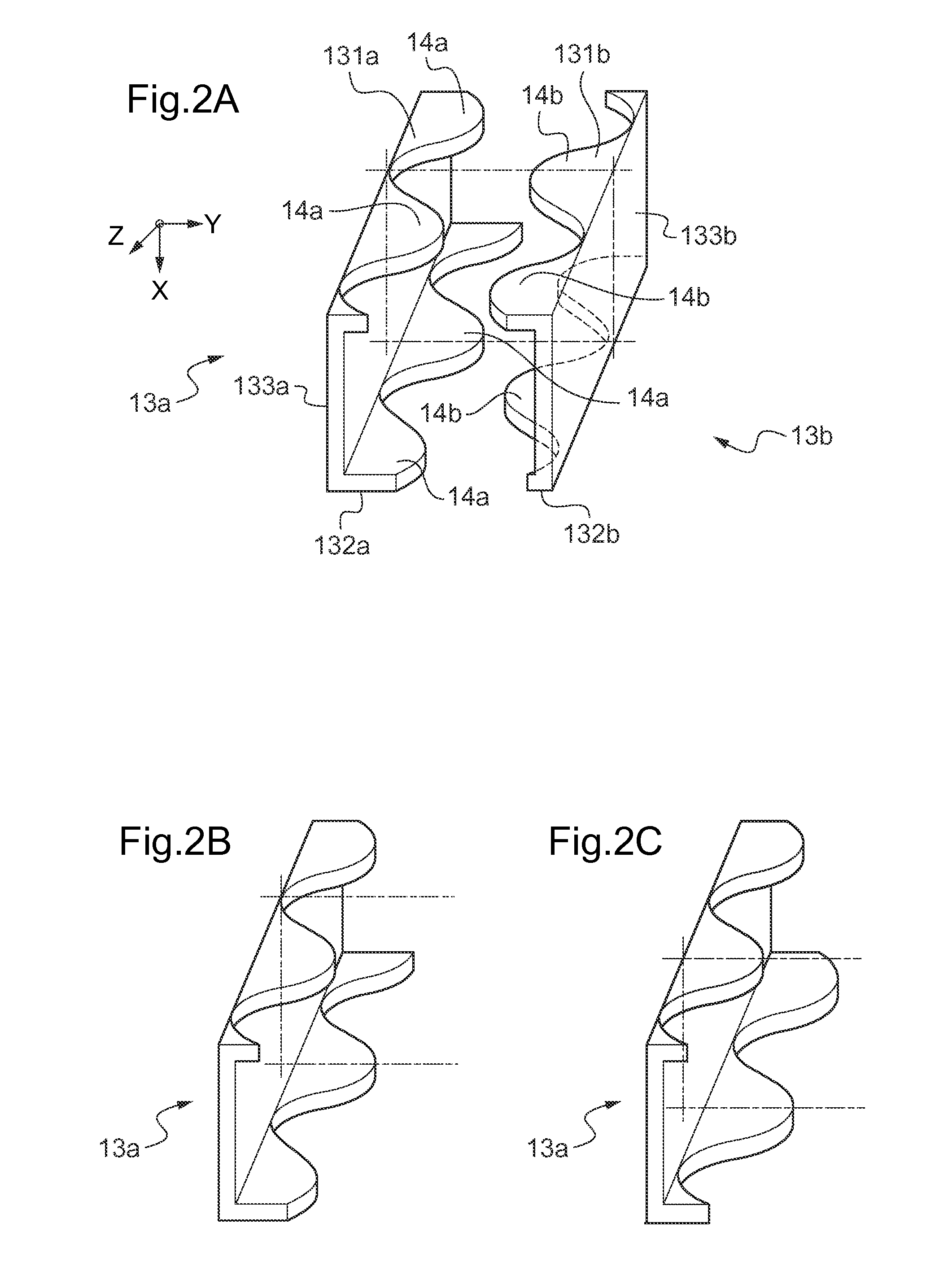Electric machine with multiple air gaps and a 3D magnetic flux
a technology of electric machines and air gaps, applied in the field of electric machines, can solve the problems of reducing the performance of current electric motors, unsuitable for high rotation speed, and inconvenient use of electrical contacts between, so as to improve the use of magnetic fields, enhance the performance of such electric machines, and improve the power-to-weight ratio
- Summary
- Abstract
- Description
- Claims
- Application Information
AI Technical Summary
Benefits of technology
Problems solved by technology
Method used
Image
Examples
first embodiment
[0140]FIG. 1 shows an electric machine 1 that relates to the invention. According to FIG. 1A, such an electric machine 1 includes an axis of rotation 2, a stator 10 and a rotor 20 that revolves about the axis of rotation 2 and inside the stator 10.
[0141]The rotor 20 includes a structure 21 and an annular receiver unit 22 that is provided with two rows 24a, 24b of magnets 23, each magnet 23 having a first north pole and a first south pole. Each row 24a, 24b thereby consists of alternating first north poles and first south poles.
[0142]This structure 21 of the rotor 20 consists of two first parts 26a, 26b on which the two rows 24a, 24b of magnets 23 are respectively positioned, and a second part 25 that notably allows the fastening of these two first parts 26a, 26b.
[0143]The stator 10 consists of an armature 19 and an annular exciter unit 11 that is equipped with a coil 12 and two identical annular yokes 13a, 13b. One portion of these yokes 13 is shown in FIG. 2A. Each yoke 13 consist...
second embodiment
[0205]FIG. 13 shows a variant of the invention, which includes, in the same way as before, an axis of rotation 2, a stator 10, and a rotor 20 rotating about the axis of rotation 2 and outside the stator 10.
[0206]The rotor 20 includes a structure 21 and an annular receiver unit 22 equipped with three rows of magnets 23, and the stator 10 includes an armature 19 and an annular exciter unit 11 equipped with a coil 12 and three annular yokes 13a, 13b, 13c. According to this variant, the rotor 20 rotates about the axis of rotation 2 outside the stator and outside the exciter unit 11. This structure 21 of this rotor 20 includes three first parts 26a, 26b, 26c, upon which are positioned, respectively, the three rows of magnets 23, and a second part 25a, 25b that allows these three first parts 26a, 26b, 26c to be attached, while ensuring magnetic isolation between them.
[0207]Each yoke 13a, 13b, 13c includes a plurality of teeth that are distributed angularly, in a regular manner, on each ex...
third embodiment
[0216]FIG. 18 shows an electric machine 1 that relates to the invention. According to FIG. 18A, such an electric machine 1 includes an axis of rotation 2, a stator 10 and a rotor 20 that revolves about the axis of rotation 2 and inside the stator 10.
[0217]The rotor 20 includes a structure 21 and an annular receiver unit 22 equipped with four rows 24a, 24b, 24c, 24d of magnets 23, with each magnet 23 having a first north pole and a first south pole. Each row 24a, 24b, 24c, 24d thereby consists of alternating first north poles and first south poles. This structure 21 of this rotor 20 includes four first parts 26a, 26b, 26c, 26d upon which are positioned, respectively, the four rows 24a, 24b, 24c, 24d of magnets 23, and a second part 25a, 25, 25c that allows these four first parts 26a, 26b, 26c, 26d to be attached, while ensuring magnetic isolation between them.
[0218]The stator 10 includes an armature 19 and an annular exciter unit 11 equipped with a coil 12 and four annular yokes 13a,...
PUM
 Login to View More
Login to View More Abstract
Description
Claims
Application Information
 Login to View More
Login to View More - R&D
- Intellectual Property
- Life Sciences
- Materials
- Tech Scout
- Unparalleled Data Quality
- Higher Quality Content
- 60% Fewer Hallucinations
Browse by: Latest US Patents, China's latest patents, Technical Efficacy Thesaurus, Application Domain, Technology Topic, Popular Technical Reports.
© 2025 PatSnap. All rights reserved.Legal|Privacy policy|Modern Slavery Act Transparency Statement|Sitemap|About US| Contact US: help@patsnap.com



